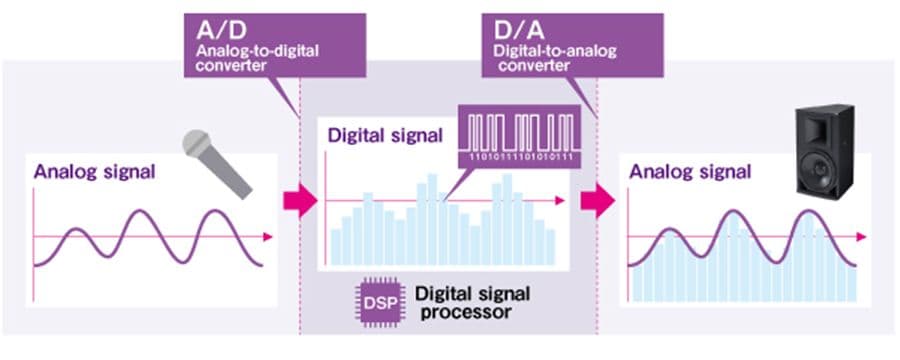

- #Lowering volume on a digital to analog audio converter Pc#
- #Lowering volume on a digital to analog audio converter plus#
And with expensive purchases such as a hi-fi system, you will hardly want to replace it every three years. Teufel Connector: Always staying at the cutting edge of technology can be a challenge. Many premium DACs can wirelessly connect to the internet, receive internet radio stations and offer an optical as well as a coaxial S/PDIF input as well as up to three USB connections – one for the computer and a special connection for iPod, iPhone and iPad as well as an input in the front for USB pen drives. Many are also amplifiers that include all possible connections for digital music listening.


High-end DACs are much more than just digital to analogue converters.

The device admittedly costs as much as a small car but completely lives up to its name as the reference in this area. In the highest price segment are DACs such as the Audio Research Reference DAC. A high-performance DAC can make an audiophile’s transition from records to digital media, or from CDs to hi-res audio files completely painless. Premium DACs will naturally cost more, but the investment can give a traditional hi-fi system a new lease on life. A truly high-end DAC, however, can be a true asset for your hi-fi system. As with the DACs built into many MP3 and CD players and even amplifiers, the technology used is not of the highest calibre. Premium DACs prove that digital can be hi-fiįor those who want to convert digital signals into the highest quality, analogue signals won’t get very far with entry model DACs.
#Lowering volume on a digital to analog audio converter Pc#
A lower-priced external DAC, however, can still do wonders for the sound produced by your PC as the sound cards that come with PCs are often compromised by noise generated by other components in the system. Naturally, MP3 and Blu-ray players can also be attached, but truly hi-fi sound quality cannot be expected in the lower price segment. This makes them perfect intermediaries between televisions and music systems. Most devices are limited to a DAC’s most basic function: Converting digital signals into analogue signals. Some models even offer USB ports so that they can also be connected to a PC and used as an external sound card.Ī volume regulator is advantageous but does not come standard issue with all introductory model DACs. On the front and back sides are the required audio connections. In the lower end of this spectrum are small DACs that look like little plastic boxes. There are many products that fulfil the same basic digital to analogue conversion function with prices ranging from 20 to 2,000 euros or more. Shop now Plug-&-play: Every day uses for DACs Play whatever you want with Teufel systems
#Lowering volume on a digital to analog audio converter plus#
A flat-screen TV plus an analogue hi-fi system is one of the main uses of the small digital-analogue converters. If you want to supply a multi-channel system with it, you have to use the digital interface anyway. Here, the maximum possible is taken out of the digital player. In contrast to a digital connection, like the usual TOSLINK connection. The built-in audio converters rarely provide good results. It only has to be output in analogue if the headphones are plugged in.īut if you want to get really good results in sound, it is better not to connect these devices via the headphone jack. After all, the audio signal is received and processed digitally. Because without the audio converter, output via a conventional 3.5 mm headphone jack (analogue) would not be possible. The same applies to MP3 players, CD players and the like and even most TVs. Many modern amplifiers and AV receivers already have a built-in DAC. Whether digital-to-analogue converter (D/A converter), audio converter or DAC (Digital Analog Converter), you will need a converter to bring a digital signal to an analogue device. Another being the quality of analogue sound. One being that analogue systems are credit to stand the test of time. Most of us watch TV digitally, or save music digitally, so now comes the question – why do we still analogue? When it comes to TV the is little in favour of analogue TV, but when it comes to hi-fi systems, there are a lot of arguments in its favour. We’ve been in the digital age for a long time.


 0 kommentar(er)
0 kommentar(er)
